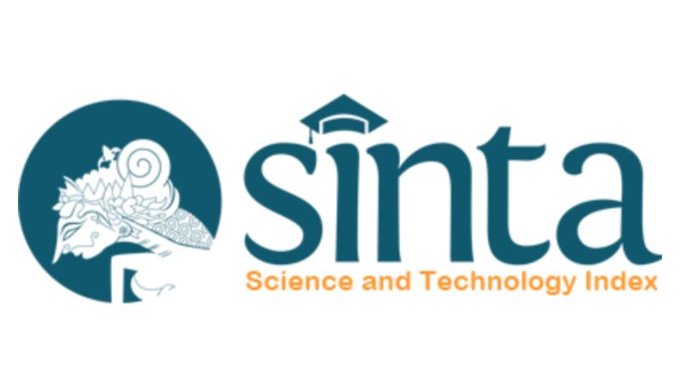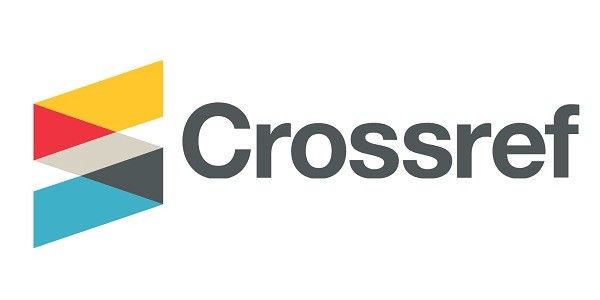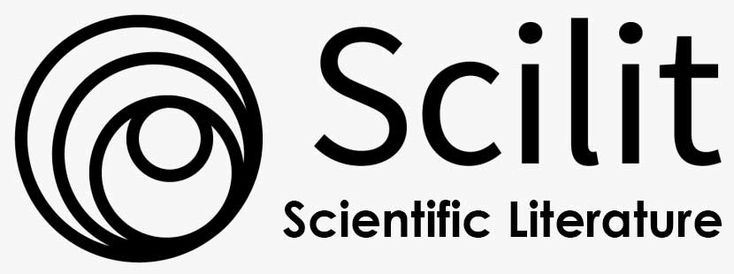Menilai Kualitas Hidup Anak Penyandang Hemofilia
DOI:
https://doi.org/10.55175/cdk.v47i6.632Keywords:
Anak, hemofilia, kualitas hidupAbstract
Hemofilia merupakan penyakit kongenital defisiensi faktor koagulasi dengan manifestasi perdarahan. Hemofilia dapat mengganggu kualitas hidup fisik, sosial, sekolah, dan emosi penyandangnya; anak dengan hemofilia memiliki persepsi diri yang lebih rendah dibandingkan anak yang sehat. Salah satu instrumen untuk menilai kualitas hidup anak adalah pediatric quality of life questionnaire/PedsQL; penggunaannya di kalangan penyandang hemofilia anak dapat menunjang tatalaksana.
Hemophilia is a congenital coagulation deficiency associated with bleeding manifestation. Hemophilia can affect physical, social, school and emotional quality of life; children with hemophilia can have lower self perception compared to healthy children. Pediatric quality of questionnaire/PedsQL is an instrument for assessment of quality of life in children; its use among children with hemophilia can improve management of haemophilia.
Downloads
References
Zimmerman B, Valentino LA. Hemophilia: In review. Pediatr Rev. 2013;34:289-95
Scott JP, Flood VH. Hereditary clotting factor deficiencies (bleeding disorder). In: Kliegman MR, Stanton BF, St Geme JW, Schor NF, eds. Nelsont textbook of pediatrics. 20th Ed. Saunders Elsevier; 2015. p. 2384-89
World Federation of Hemophilia. Report on the annual global survey [Internet]. 2018. Available from: www.wfh.org/publications/files/pdf-1731.pdf
Indonesian Hemophilia Society. Profil himpunan masyarakat hemofilia Indonesia [Internet]. [cited 2019 March]. Available from: www.hemofilia.or.id.
Smith J, Smith OP. Hemophilia A and B. In: Arceci RJ, Hann IM, Smith OP, eds. Pediatric hematology. 3rd Ed. Massachusetts: Blackwell Publishing; 2006. p. 585-97
Trzepacz AM, Vannatta K, Davies WH, Stehbens JA, Noll RB. Social, emotional, and behavioral functioning of children with hemophilia. J Dev Behav Pediatr. 2003;24:225-32
Shapiro AD, Donfield SM, Lynn HS, Cool VA, Stehbens JA, Hunsbergert SL, et al. Defining the impact of hemophilia: The academic achievement in children with hemophilia study. Pediatrics 2001;108:1-6
Poon JL, Zhou ZY, Doctor JN, Wu J, Ullman MM, Ross C, et al. Quality of life in hemophilia A: Hemophilia utilization group study Va (HUGS-Va). Haemophilia. 2012;18:699-707
Ravens-Sieberer U. Measuring and monitoring quality-of-life in population surveys: Still a challenge for public health research. Soz.-Praventivmed 2001;46:201–4
World Health Organization. WHOQOL user manual. Geneva: WHO; 1998.
Taylor RM, Gibson F, Franck LS. A concept analysis of health related quality of life in young people with chronic illness. J Clin Nurs. 2008;17:1823-33
Leidy NK, Revicki DA, Geneste B. Recommendation for evaluating the validity quality of life claims for labeling and promotion. Value Health 1999;2:113-27
Fayed N, De Camargo OK, Kerr E, Rosenbaum P, Dubey A, Bostan C, et al. Generic patient-reported outcomes in child health research: A review of conceptual content using World Health Organization definitions. Dev Med Child Neurol. 2012;54:1085
Bullinger M, von MackensenS. Psycho-social determinants of quality of life in children and adolescents with hemophilia: A cross cultural approach. Clini Psychol Psychother. 2008;15:164-72
Zhang H, Huang J, Kong X, Ma G, Fang Y. Health-related quality of life in children with haemophilia in China: A 4-year follow up prospective cohort study. Health Qual Life Outcomes. 2019;17:1-8
Castano AF, Restrepo MJ, Duran FS. Quality of life in a population with hemophilia: A cross-sectional study from a single hemophilia treatment center. Rev Colomb Reumatol. 2017; 24:18-24
World Health Organization. WHO meeting on the assessment of quality of life in health care. Geneva: WHO; 1991
Lobet S, Hermans C, Lambert C. Optimal management of hemophilic arthropathy and hematomas. J Blood Med. 2014;5:207-18
Fischer K, Bom JG, Mauser-Bunschoten EP, Roosendaal G, Berg HM. Effects of haemophilic arthropathy on health related quality of life and socioeconomic parameters. Haemophilia 2005;11:43-8
WHO. International classification of functioning, disability, and health. World Health Organization (WHO), ICF Geneva. 2001
Blanchette VS, Key NS, Ljung LR, Manco-Johnson MJ, Van den berg HM, Srivastava A, et al. Definitions in hemophilia: Communication from the SSC of the ISTH. J Thromb Haemost. 2014;12:1935-9
Goto M, Takedani H, Yokota K, Haga N. Strategies to encourage physical activity in patients with hemophilia to improve quality of life. J Blood Med. 2016;7:85-98
Monahan PE, Baker JR, Riskie B, Soucie JM. Physical functioning in boys with hemophilia in the U.S. Am J Prev Med. 2011;41:360-8
Wu R, Sun J, Xiao J, Liu Y, Xue F, Wang H, et al. A prospective study of health related quality of life of boys with severe hemophilia A in China: Comparing on-demand to prophylaxis tretament. Haemophilia. 2017;23:430-6
National Hemophilia Foundation. Caring your child with hemophilia: Emotional development [Internet]. [cited 2019 March]. Available from: https://www.hemophilia.org.
Williams KA, Chapman MV. Social challenges for children with hemophilia: Child and parent perspectives. Social work in Health Care. 2011;50:199-214
World Federation of Hemophilia. The pain management book for people with haemophilia and related bleeding disorders. Hemophilia Foundation Australia World Federation of Hemophilia. 2000;22:2-7
Clemente C, Tsiantis J, Sadowski H, Lee C, Baharaki S, Ba G, et al. Psychopathology in children from families with blood disorders: A cross national study. Eur Child Adolesc Psychiatry. 2003;12:153-60
Khair K, Chaplin S. The impact on parents of having a child with haemophilia. J Haem Pract. 2016;3:1-11
Wiedebusch S, Pollmann H, Siegmund B, Muthny FA. Quality of life, psychosocial strains and coping in parents of children with hemophilia. Haemophilia. 2008;14:1014-22
Abali O, Zulfikar OB, Karakoc Demirkaya S, Ayaydin H, Kircelli F, Duman M. An examination of the symptoms of an anxiety and parental attitude in children with hemophilia. Turk J Med Sci. 2014;44:1087-90
Karande S, Kulkarni M. Poor school performance. Indian J Pediatr. 2005;72:961-7
Crump C, Rivera D, London R, Landau M, Erlendson B, Rodriguez E. Chronic health conditions and school performance among children and youth. Ann Epidemiol. 2013;23:179-84
Buckner TW, Witkop M, Guelcher C, Frey MJ, Hunter S, Peltier S, et al. Management of US men, women, and children with hemphilia and methods and demographics of the bridging hemophilia B experiences, results and opportunities into solutions (B-HERO-S) study. Eur J Haematol. 2017;86:5-17
Seki Y, Kakinuma A, Kuchii T, Ohira K. Disclosing haemophilia at school: Strategies employed by mothers of children with haemophilia in Japan. Haemophilia. 2015;21:629-35
Shaffer DR. Social and personality development. 6th ed. USA: Wadsworth; 2009
Clemente C, Tsiantis J, Kolvin I, Ba G, Christogiorgos S, Lee C, et al. Social adjustment in three cultures: Data from families affected by chronic blood disorders. A sibling study. Haemophilia. 2003; 9:317-24
Eiser C. Children’s quality of life measures. Arch Dis Child. 1997;77:350-4
Muhaimin T. Mengukur kualitas hidup anak. Jurnal Kesehatan Masyarakat Nasional. 2010;5:51-5
Matza LS, Swensen AR, Flood EM, Secnik K, Leidy NK. Assessment of health related quality of life in children: A review of conceptual, methodological, and regulatory issues. Value in Health. 2004;7:79-92
Remor E. Quality of life and symptom assessment in hematological bleeding disorders: Hemophilia. In: Novik A, Salek S, Ionova T, eds. Patient reported outcomes in hematology. Italia: Forum Service Editore 2012. p. 90-8
Varni JW, Burwinkle TM, Seid M. The PedsQLTM as a pediatric patient-reported outcome: Reliability and validity of the PedsQLTM measurement model in 25.000 children. Expert Rev. Pharmacoeconomics Outcome Res. 2005;5:705-19
Varni JW. PedsQL translation: List of existing translations [Internet]. [cited 2019 Dec]. Available from: www.pedsql.org.
Varni JW, Seid M, Rode CA. The PedsQL: Measurement model for the pediatric quality of life inventory. Med Care. 1999;37:126-39
Bullinger M, Brutt AL, Erhart M, Ravens-Sieberer U, BELLA study group. Psychometric properties of the KINDL-R questionnaire: Result of the BELLA study. Eur Child Adolesc Psychiatry. 2008;17:125-32
Vogels TC, Verrips GHW, Koopman HM, Theunissen NCM, Fekkes M, Kamphuis RP. TACQOL Manual. Leidein Center for Child Health and Pediatrics. 2004; 1-96
Young NL, Bradley CS, Wakefield CD, Barnard D, Blanchette VS, McCusker PJ. How well does the Canadian Haemophilia Outcomes-Kids’ Life Assessment Tool (CHOKLAT) measure the quality of life of boys with haemophilia? Pediatr Blood Cancer 2006;47:305-11
World Federation Hemophilia. Guidelines for the management of hemophilia. Canada: Blackwell Publishing; 2012
Broderick C, Herbert RD, Latimer J, Curtin JA, Selvadurai HC. The effect of an exercise intervention on aerobic fitness, strength and quality of life in children with haemophilia. BMC Blood Disord. 2006;6:1-5
Alabek M, Mohan R, Raia MH. Genetic counseling for hemophilia. World Federation of Hemophilia [Internet]. [cited March 2019]. Available from: http://www1.wfh.org.
Downloads
Published
How to Cite
Issue
Section
License
Copyright (c) 2020 Cermin Dunia Kedokteran

This work is licensed under a Creative Commons Attribution-NonCommercial 4.0 International License.





















